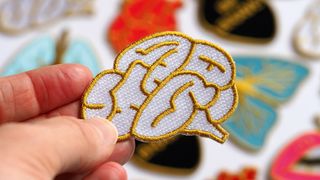Design pioneer Louise Fili on gastronomic passion and gangster clients
The veteran designer looks back on a body of work that always leaves the mouth watering.
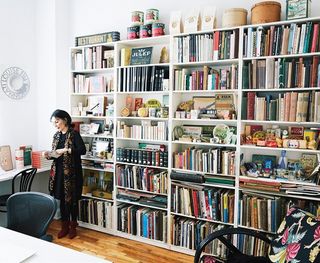
Louise Fili is nothing short of a pioneer. She began her career under the great Herb Lubalin. Between 1978 and 1989 she designed close to 2,000 beautifully unique book jackets as art director of Pantheon Books.
She later founded Louise Fili Ltd, a studio responsible for the logo design and packaging for brands including Good Housekeeping, Crane & Co. and the Tiffany monogram. So far, she has received accolades from The Society of Illustrators, the New York Art Directors Club and been inducted into the Art Directors Hall of Fame.
And despite this stellar ascent to the world of branding, Fili's work is celebrated for its craftsmanship. Her illustration and calligraphy is always sumptuously refined, and her dedication to the world of food branding reveals a life's passion for gastronomy.
In 2012 a monograph, Elegantissima: The Design and Typography of Louise Fili, was published, revealing an uncompromising body of work from a truly distinctive creative.
What did design mean to you when you were young – did you view it as a possible career?
I was always interested in design, even before I knew what it was. As a four-year-old, I used to stealthily carve letterforms into the wall above my bed at night.
At age eight, I got it into my head that I would be a novelist, and would put all my energy into designing the cover first, then lose interest in writing the book.
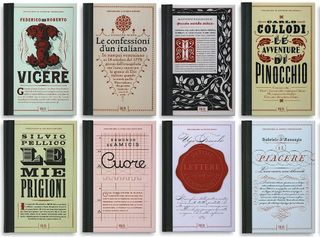
When I was in high school, I sent away for an Osmiroid pen advertised in the back of The New Yorker magazine and I taught myself calligraphy.
Soon I would be making illuminated manuscripts of Bob Dylan lyrics to sell to my classmates. I still didn't know what graphic design was. At that time it was called commercial art – a very unsexy term.
Where did you study design, and what did your course teach you?
I studied art at Skidmore College, where if you couldn't paint, they would say you were 'graphically oriented'.
That's when it all came together for me: calligraphy, making books, photographing signs – I finally discovered that all the things I loved were actually graphic design.
I loved making books, using metal type or calligraphy. My final project was a hand-lettered Italian cookbook.
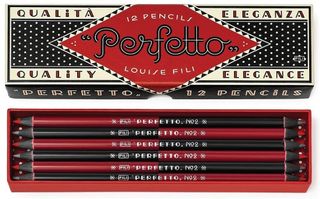
You worked with the great Herb Lubalin – what was that experience like and what did take away from it?
It was an extraordinary experience working for Herb, where the attention to typography was unlike anything I had ever experienced. My office was in close physical proximity to Herb's, which gave me the unique opportunity to witness his thought process.
Watching him sketch out a design was mesmerising, and an important take-away for me.
You set up your own studio after 11 years at Pantheon and almost 2,000 book jackets designed – what made you leave?
At Pantheon I was on a mission to prove that a book jacket needn't shout to capture someone's attention. I think that the cover I did for The Lover is the best example of that.
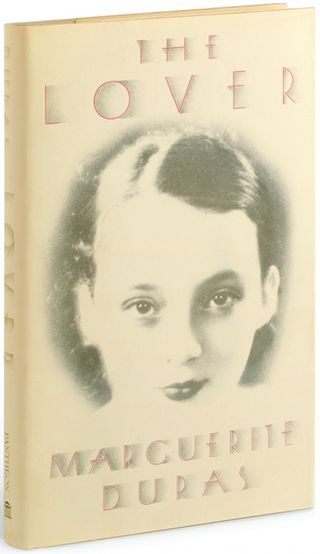
My son was born, and Pantheon gave me a three-month leave and a fax machine. I already had a studio at home, a roster of clients in the book publishing industry and an interest in diversifying. I realised that there was no need to go back to Pantheon.
Tell us about a memorable client experience from when you first set out alone. How did it shape your attitude to the design 'business'?
When I first started designing for restaurants, I realised that this was the polar opposite of publishing; I found myself dealing with clients who were just short of gangsterdom. When I mentioned some difficulties I was having with another client, a restaurateur looked at me straight in the eye and said, "Louise, what did you go to a lawyer for? Why didn't you come to me?"
I realised that a) he wasn't kidding, and b) these are the first words uttered by Don Corleone in The Godfather. This was a different world indeed. On the other hand, I always had a table.
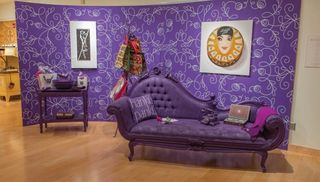
Are you a sketchpad person or a computer creative? How would you create a logo design, for example?
Sketching for me is the most exciting part of the process. There is so much potential in a loose but thoughtfully considered sketch. I design logos in the same way I designed book covers for so many years: I would sit down with a tracing pad and pencil, draw a rectangle and start writing the title of the book over and over, page after page, letting the words speak to me.
After a while it would go from a jumble of scribbles to a more refined type treatment. I would realise that this was a typeface that didn't exist, and I would then have to plan how to go to create it.

You're a well-published author [together with Fili's husband, Steven Heller]: what does writing do for you that design doesn't?
I have done several books with Steve on typography and design, based on our many collections. Lately I have been doing my own books on Italy, which I enjoy immensely. I have a book going to press soon on my photographs of Italian shop and restaurant signs, which I have been documenting for over 30 years. After that comes Paris!
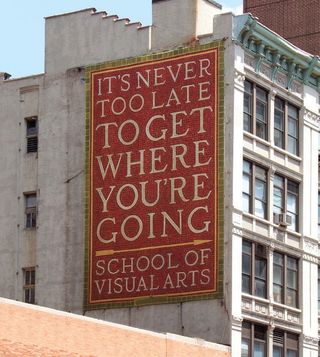
Elegantissima is your monograph from last year – what are your personal highlights from it, and was it challenging to put together?
Nothing is more stressful or emotional than doing your own monograph – seeing your entire life and career flash before you like a movie trailer. It was also the most text I had ever written – and in the first person, which always seems so pompous.
But putting this together gave me the opportunity to look at my career in perspective, which I had never really done before. I learned a lot from the experience and now feel more comfortable writing – and I sometimes even enjoy it!
You've since taken the collection live with an exhibition in collaboration with set designer Kevin O'Callaghan. How did you work together?
I was invited to have my first retrospective exhibition, and the only way I could imagine doing it was to create a series of room environments – a kitchen filled with food packaging; a library of book designs; a bistro with menus, business cards, matches and wine bottles; and finally a boudoir to house intimate apparel.
I explained the idea to Kevin, who took the idea and transformed my 40-year career into a multi-roomed house, each environment with its own distinctive colour.
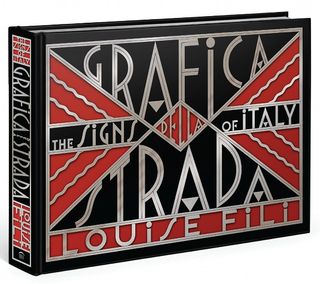
A sunny yellow kitchen wallpapered with Irving Farm patterns sports a deco refrigerator with gelato inside, and a baker's rack of biscotti, jams and crackers.
The violet fainting couch is scattered with letters sealed with Love stamps and a Hanky Panky negligee. A deep red library with illuminated fireplace beckons, as do the two glasses of red wine atop a bistro table. It was an amazing installation – I wanted to live there.
Restaurant and food branding and packaging design are what you are most celebrated for – is there anything you really don't like to eat?
I have to say that I won't take on a packaging project if I don't like the product. It would be difficult to design something that I don't feel good about. I like to eat just about everything, except for foods that don't like me, which is anything with dairy in it.
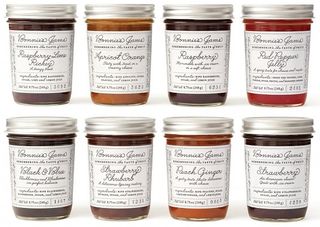
Words: Tom Dennis
Louise Fili's latest book, Grafica della Strada: The Signs of Italy (Princeton Architectural Press) will be released in October 2014. This article originally appeared in Computer Arts issue 225.

Thank you for reading 5 articles this month* Join now for unlimited access
Enjoy your first month for just £1 / $1 / €1
*Read 5 free articles per month without a subscription

Join now for unlimited access
Try first month for just £1 / $1 / €1
Get the Creative Bloq Newsletter
Daily design news, reviews, how-tos and more, as picked by the editors.
The Creative Bloq team is made up of a group of design fans, and has changed and evolved since Creative Bloq began back in 2012. The current website team consists of eight full-time members of staff: Editor Georgia Coggan, Deputy Editor Rosie Hilder, Ecommerce Editor Beren Neale, Senior News Editor Daniel Piper, Editor, Digital Art and 3D Ian Dean, Tech Reviews Editor Erlingur Einarsson and Ecommerce Writer Beth Nicholls and Staff Writer Natalie Fear, as well as a roster of freelancers from around the world. The 3D World and ImagineFX magazine teams also pitch in, ensuring that content from 3D World and ImagineFX is represented on Creative Bloq.



